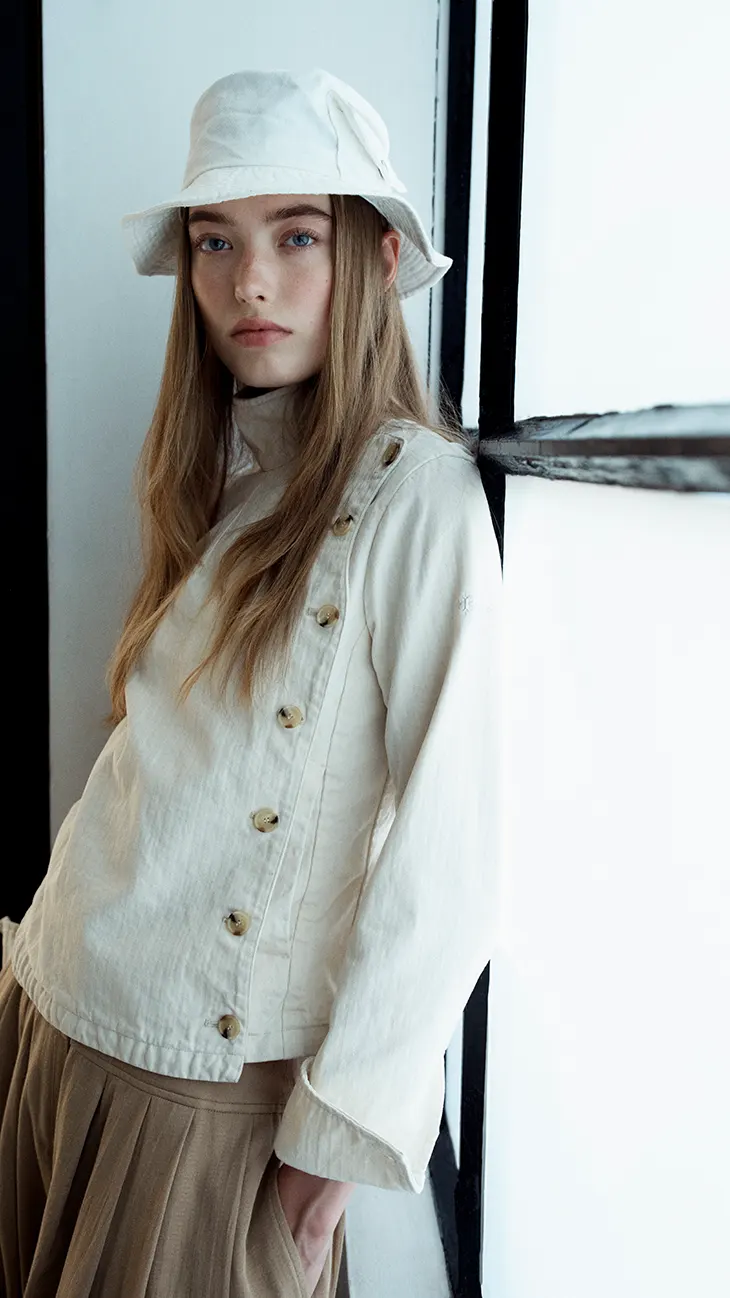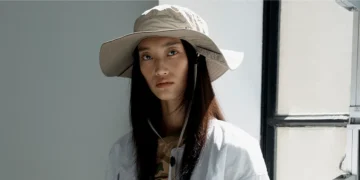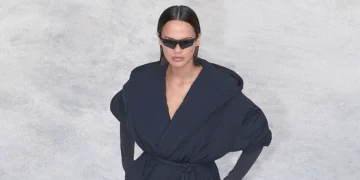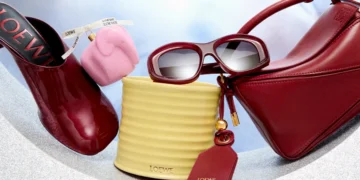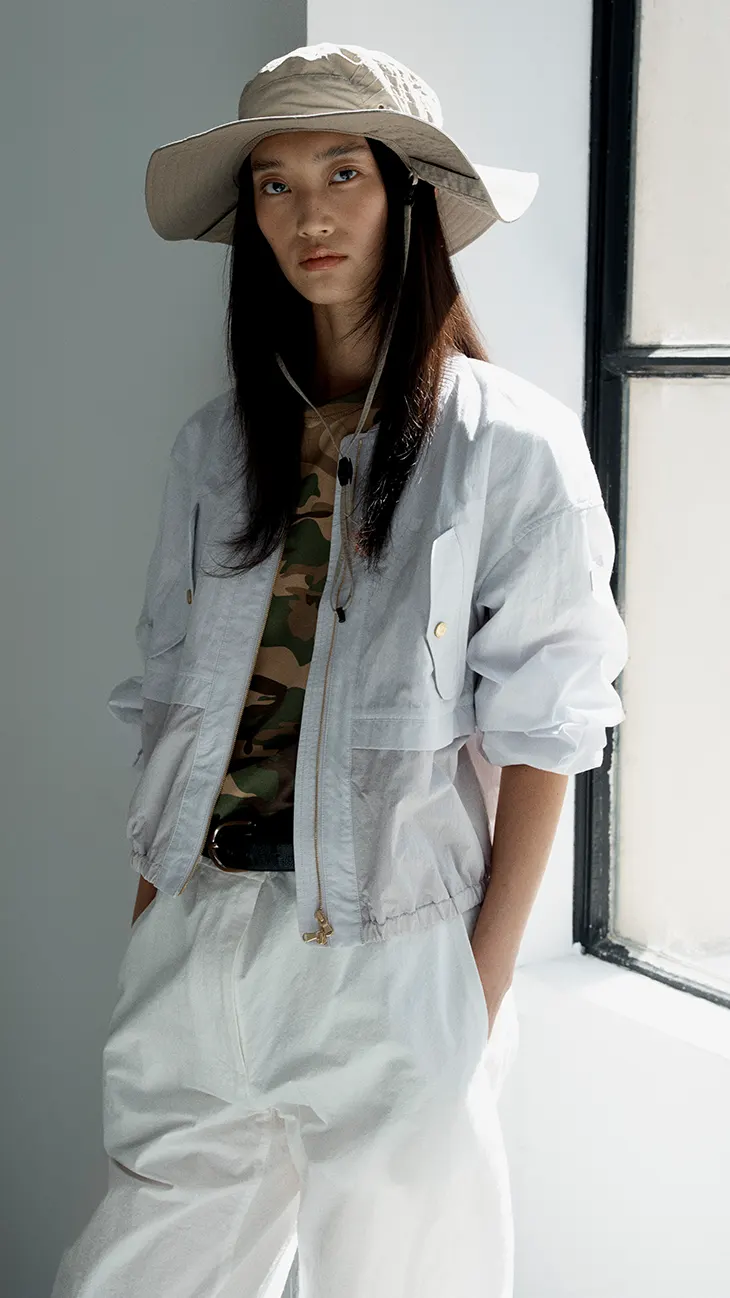
TATRAS approaches SS26 with a clear direction rooted in its original vision: creating garments that serve everyday life through refined design and purposeful construction. Founded in Italy by a Japanese entrepreneur, the brand draws its strength from the conversation between Eastern and Western aesthetics. This cross-cultural exchange continues to shape its identity, staying close to utility without sacrificing design clarity.
The SS26 collection builds on the label’s foundation. Instead of seasonal rupture, TATRAS favors continuity. Pieces flow naturally from previous collections, guided by a modular approach that gives space for personal styling. Each silhouette appears considered, shaped with precision to suit both form and function. Jackets sit cropped, blousons follow a lean structure, and details like asymmetric closures and double-breasted fronts reference uniform codes.
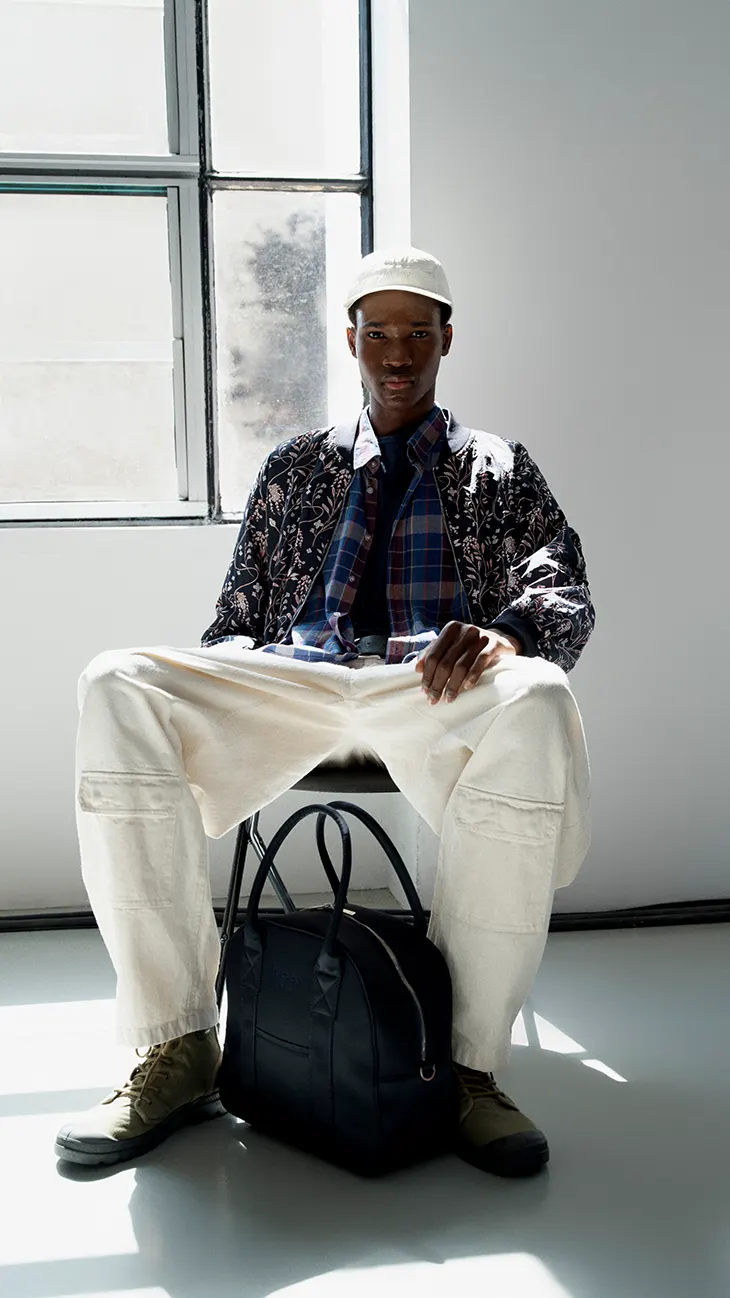
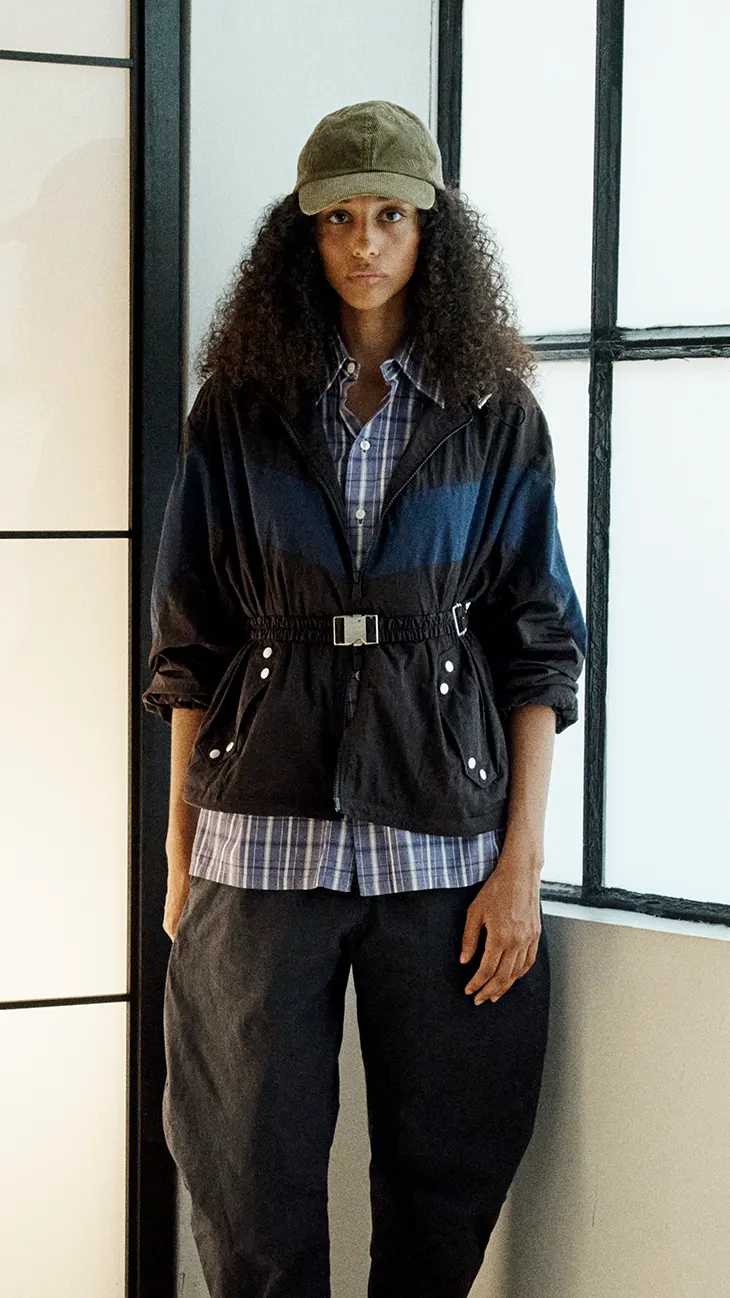
A sense of urban safari runs through the collection, with clothes designed to respond to heat and motion. Function remains central. Hoods and caps protect, while jersey appears in adaptable pieces that function either as outerwear or base layers. Matching sets in graphic patterns redefine camouflage through a design lens. Drapey jodhpur pants and structured tops carry texture and movement. TATRAS emphasizes construction, breaking down garments into visible elements. The use of varied materials within single pieces builds dimension and anchors each item in the real.
The fabrics selected for Spring Summer 2026 reinforce this approach. TATRAS works with washed herringbone cotton, nylon taffetas, and envers satin, treating each to suggest weathered use. These textures give the clothes a tactile quality, as if they’ve already traveled with the wearer. Japanese craft techniques inform several fabric choices. Striped cotton-linen nods to traditional patterns, while floral motifs on nylon taffeta echo the process of Indigo dyeing. A cotton-silk typewriter fabric adds softness without sacrificing structure, its check pattern subtle but clear. The color palette follows function: Khaki, Sand, and Navy Blue provide the base, while Vivid Green breaks through in measured doses.
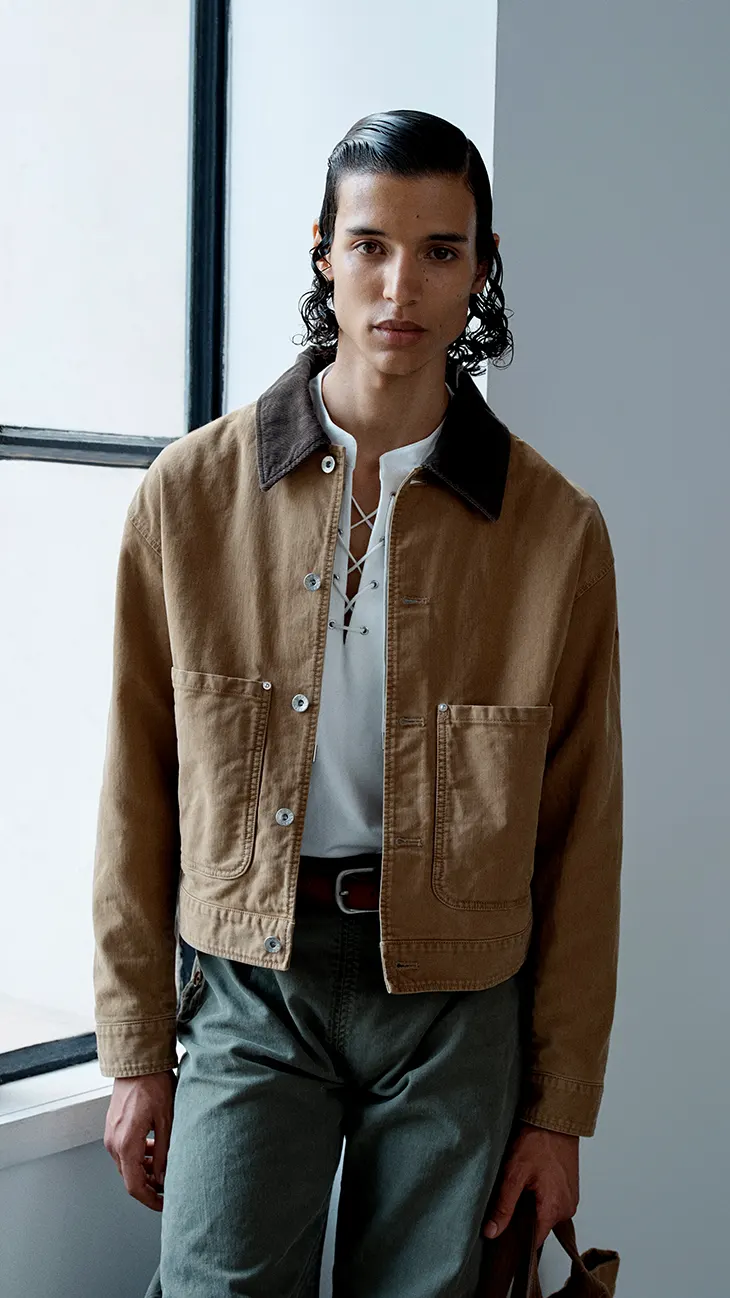
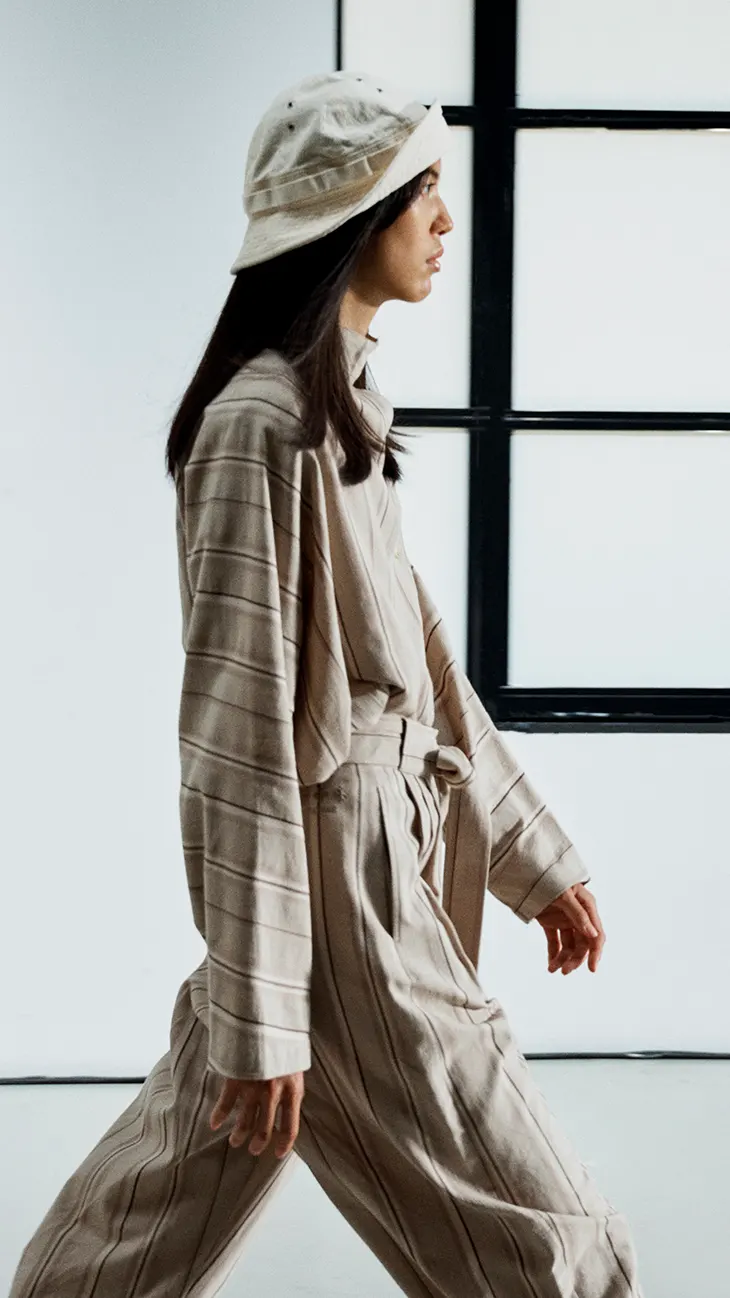
The presentation of the collection, curated by Mehdi Dakhli with music by Ed Davenport, creates a physical space that mirrors the clothing’s intentions. Inside the Palais de Tokyo, the raw industrial setting meets a distilled Japanese aesthetic. A Shoji screen stands beside a pond where a white-painted tree rises with deliberate grace. Crafted from Yakisugi wood, the benches and wooden elements carry the material history of Japan, while the choice of white bark signals newness and clarity.
